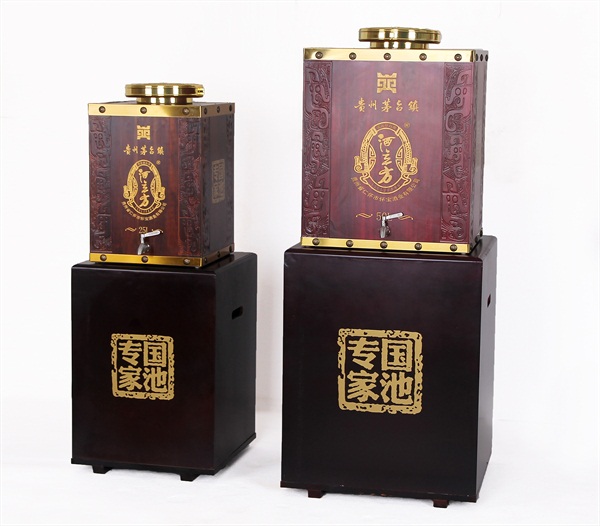秋季釀酒季節已經到來,但是如果我們連影響酒產量的因素都不知道,我們怎么用釀酒設備酒廠釀造酒呢?除了釀酒設備酒廠的涼爽和密封性,還有什么其他因素影響白酒產量?影響酒產量的因素有很多,例如小型釀酒廠設備的冷卻和密封性、淀粉濃度、發酵溫度和衛生條件。
The autumn brewing season has come, but if we don't even know the factors affecting wine production, how can we use brewing equipment winery to brew wine? What other factors affect the production of Baijiu besides the coolness and airtightness of brewery and winery? There are many factors affecting wine production, such as cooling and sealing of equipment in small breweries, starch concentration, fermentation temperature and sanitary conditions.
白酒發酵是淀粉經糖化轉化為糖,然后糖轉化為乙醇的過程。因此,淀粉含量直接影響著出酒率,這也是不同谷物釀酒設備出酒率不同的原因。當我們選擇谷物時,我們需要選擇新鮮、飽滿、無霉、無雜質和高淀粉含量的。
Baijiu fermentation is the process of amylose conversion to sugar and then sugar to ethanol. Therefore, the starch content directly affects the liquor yield, which is also the reason why the liquor yield of different grain brewing equipment is different. When we choose grains, we need to choose fresh, full, mold free, impurity free and high starch content.

酒曲,一種釀酒的發酵劑,在有氧條件下大量繁殖,產生更多的酵母,將淀粉轉化為糖,并在無氧條件下將糖轉化為乙醇。因此,釀酒設備發酵時,糖化前期需要少量氧氣,需要半封閉發酵;在后期,需要厭氧發酵,這需要完全密封發酵。在這個過程中,空氣接觸過少或過多都會影響酒的產量。
Distiller's yeast, a starter for brewing, propagates in large numbers under aerobic conditions to produce more yeast, convert starch into sugar, and convert sugar into ethanol under anaerobic conditions. Therefore, during the fermentation of brewing equipment, a small amount of oxygen is required in the early stage of saccharification and semi closed fermentation is required; In the later stage, anaerobic fermentation is required, which requires completely sealed fermentation. In this process, too little or too much air contact will affect the yield of wine.
如果環境溫度過高或過低,將影響釀酒設備的發酵。如果溫度低于15℃,該菌株將不具有活性,發酵將不可能進行。如果溫度高于36℃,有益菌不能存活或雜菌繁殖快,導致出酒率低。一般來說,發酵的適宜溫度為20-30℃。夏季釀酒可以降低曲溫,并在發酵過程中采取相應的降溫措施;冬季,酒曲溫度稍高,在發酵過程中采取加溫和保溫措施。
If the ambient temperature is too high or too low, it will affect the fermentation of brewing equipment. If the temperature is lower than 15 ℃, the strain will not have activity and fermentation will not be possible. If the temperature is higher than 36 ℃, the beneficial bacteria cannot survive or the miscellaneous bacteria reproduce quickly, resulting in low liquor yield. Generally speaking, the suitable temperature for fermentation is 20-30 ℃. Wine making in summer can reduce the koji temperature and take corresponding cooling measures in the fermentation process; In winter, the temperature of koji is slightly higher, and heating and heat preservation measures are taken in the fermentation process.
釀酒設備和發酵容器、發酵水、冷卻床、操作工具等要進行。建議使用5‰的高錳酸鉀或生石灰。
Brewing equipment and fermentation containers, fermentation water, cooling bed, operating tools, etc. shall be disinfected and sterilized. It is recommended to use 5 ‰ potassium permanganate or quicklime for disinfection.
雖然我們說一罐酒醅發酵后多少酒是固定的,但設備選擇不當也會影響酒的產量。如果釀酒設備的冷卻和密封性能不好,在蒸的過程中會有大量的酒揮發,這會降低酒的產量。設備設計不合理,蒸酒過程中透氣性差,酒不能完全擠出。因此,釀酒時選擇一套合適的工具對我們來說非常重要。
Although we say that the amount of wine after fermentation in a can of fermented grains is fixed, improper selection of equipment will also affect the output of wine. If the cooling and sealing performance of brewing equipment is not good, a large amount of wine will volatilize during steaming, which will reduce the output of wine. The equipment design is unreasonable, the air permeability is poor in the process of steaming wine, and the wine can not be completely extruded. Therefore, it is very important for us to choose a suitable set of tools when making wine.

 自動售酒機 2024-07-25
自動售酒機 2024-07-25  不銹鋼酒桶:關于酒桶你需要知道的一切 2024-07-19
不銹鋼酒桶:關于酒桶你需要知道的一切 2024-07-19  不銹鋼釀酒桶大解析! 2024-07-13
不銹鋼釀酒桶大解析! 2024-07-13  不銹鋼酒罐的產品概述及特點 2024-06-13
不銹鋼酒罐的產品概述及特點 2024-06-13  大型釀酒設備有哪些組成? 2024-06-10
大型釀酒設備有哪些組成? 2024-06-10  自動售酒機的產品特點 2024-06-07
自動售酒機的產品特點 2024-06-07  白酒釀酒設備知識介紹 2024-06-04
白酒釀酒設備知識介紹 2024-06-04  全自動涼茬機的使用故障有哪些? 2024-05-24
全自動涼茬機的使用故障有哪些? 2024-05-24  不銹鋼內膽實木酒桶:木酒桶如何儲存葡萄酒? 2024-05-23
不銹鋼內膽實木酒桶:木酒桶如何儲存葡萄酒? 2024-05-23  自動售酒機有哪些功能 2024-05-22
自動售酒機有哪些功能 2024-05-22  全自動涼茬機的工藝流程以及組成 2024-05-21
全自動涼茬機的工藝流程以及組成 2024-05-21  不銹鋼內膽實木酒桶:不銹鋼材質的優勢 2024-05-20
不銹鋼內膽實木酒桶:不銹鋼材質的優勢 2024-05-20